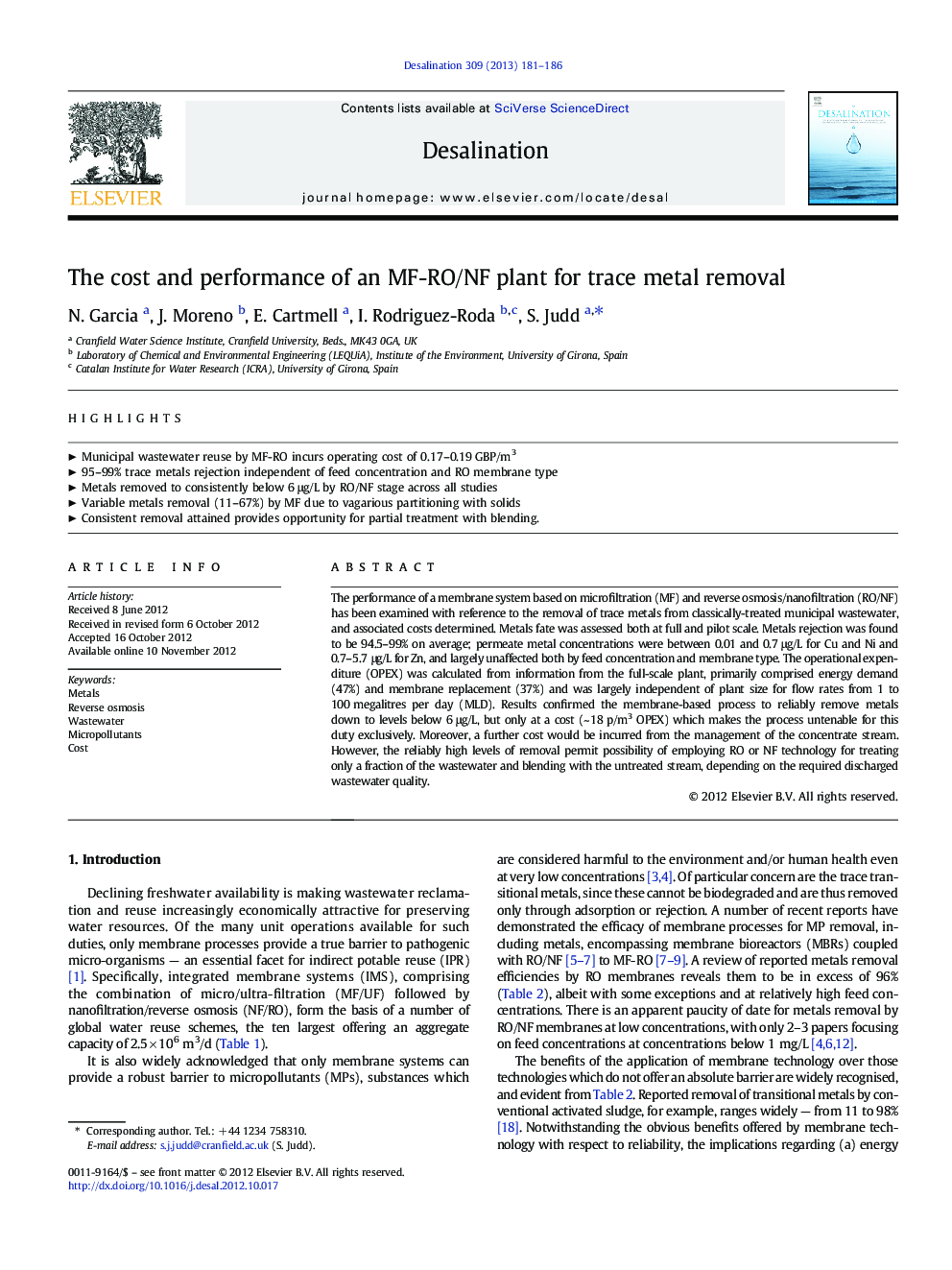| Article ID | Journal | Published Year | Pages | File Type |
|---|---|---|---|---|
| 624076 | Desalination | 2013 | 6 Pages |
The performance of a membrane system based on microfiltration (MF) and reverse osmosis/nanofiltration (RO/NF) has been examined with reference to the removal of trace metals from classically-treated municipal wastewater, and associated costs determined. Metals fate was assessed both at full and pilot scale. Metals rejection was found to be 94.5–99% on average; permeate metal concentrations were between 0.01 and 0.7 μg/L for Cu and Ni and 0.7–5.7 μg/L for Zn, and largely unaffected both by feed concentration and membrane type. The operational expenditure (OPEX) was calculated from information from the full-scale plant, primarily comprised energy demand (47%) and membrane replacement (37%) and was largely independent of plant size for flow rates from 1 to 100 megalitres per day (MLD). Results confirmed the membrane-based process to reliably remove metals down to levels below 6 μg/L, but only at a cost (~ 18 p/m3 OPEX) which makes the process untenable for this duty exclusively. Moreover, a further cost would be incurred from the management of the concentrate stream. However, the reliably high levels of removal permit possibility of employing RO or NF technology for treating only a fraction of the wastewater and blending with the untreated stream, depending on the required discharged wastewater quality.
► Municipal wastewater reuse by MF-RO incurs operating cost of 0.17–0.19 GBP/m3 ► 95–99% trace metals rejection independent of feed concentration and RO membrane type ► Metals removed to consistently below 6 μg/L by RO/NF stage across all studies ► Variable metals removal (11–67%) by MF due to vagarious partitioning with solids ► Consistent removal attained provides opportunity for partial treatment with blending.
